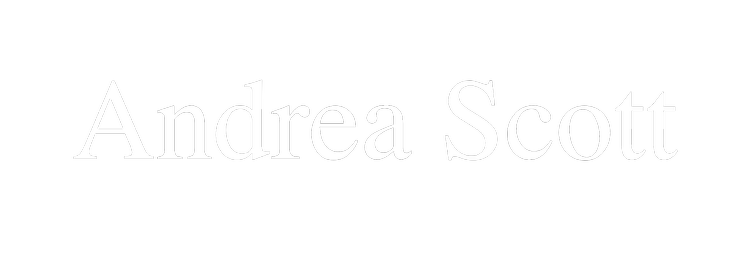*This is an essay I was asked to write in 2016 about my personal experience in theatre
2016
I’m writing this on Canada Day as I travel to Shaw in Niagara-on-the-Lake to see Master Harold and the Boys, directed by Philip Akin, and Adventures of a Black Girl in her Search for God, a GBS story adapted by Lisa Codrington. This is the perfect weekend to reflect on the state of Canadian Theatre and how it has evolved. I will attempt to show its ephemeral nature by looking at it from my perspective as a London Ontario native who started consuming theatre in 1986.
1985-1989
I attended H.B. Beal, a technical school, where I was in the Television & Broadcasting program. CanCon (Canadian Content) was being forced down the throats of radio stations in that 30% of their content had to be Canadian. So, while we, the listening audience, would have preferred to listen to 12 hours of Bad Brains, The Cure, Bruce Springsteen, and The Pogues, the CRTC regulated that 3 of those hours had to be dedicated to Gowan, Kim Mitchell, Maestro Fresh Wes and Skinny Puppy, et al. And while it may have felt like being force fed vegetables I’m happy I got to know the music of Amanda Marshall, Gordon Lightfoot, Neil Diamond, and Liberty Silver. Popeye was right: spinach is really good for you.
I became interested in theatre in high school and the curriculum could have used a CRTC-like nudge. My drama teacher taught theatre by making us study Phantom of the Opera and Les Miserables. She taught us about auditioning by performing an interpretive dance to ‘Running Up that Hill’ by Kate Bush. Is it any wonder that I was ignorant of Canadian Theatre in the 80’s?
Thank Heavens for Martha Henry who, as the Artistic Director of The Grand Theatre, programmed ‘A Warm Wind in China’ by Kent Stetson in her first season at the company. A play about AIDS starring a beautiful 38 year old actor named Philip Akin, I was engaged completely. I had never seen a black man on stage before, nor had I been exposed to homosexual relationships portrayed so matter of fact; the scales fell from my eyes and I saw theatre as an honest portrayal of real life.
I was foolish. I bounded up to my theatre teacher and told him I couldn’t wait to audition for the next season of plays at our high school. “Don’t bother auditioning, Andrea,’ he said, ‘there are no black parts.’ Well, at least he said it out loud. Eventually my school produced The Crucible and guess which role I played? No, not Abigail, but nice try.
1991
It wasn’t until I went to the University of Toronto for theatre that I was exposed to Canadian Theatre in the form of Judith Thompson, George F Walker, Paul Thompson, Michelle Tremblay, Linda Griffiths, and James Reaney. You will notice the lack of diversity but, at the time, I did not; I was used to my experiences being invisible.
Shortly after getting my degree D’janet Sears won four Doras and a Chalmers for ‘Harlem Duet’ in 1997. It had been almost 10 years since I’d seen a strong black character on stage and here there was more than one. Nigel Shawn Williams, Barbara Barnes Hopkins, Dawn Roach, Jeff Jones, and Alison Sealy-Smith gave me hope. A few years later we were gifted with ‘Riot’ by Andrew Moodie, which was also awarded a Chalmers. You cannot truly comprehend how important it is to see people who look like you on stage that reflect your experiences authentically.
2016
20 years later I am a playwright. My objective is to create roles for people of colour who are three dimensional, complex people. The Canadian Theatre landscape is very different now than it was 30 years ago when Halle berry was first runner up for Miss USA, Reagan was in power, Jordan scored 63 points against the Celtics, and Ferris Bueller’s Day Off made its glorious debut. For our country’s theatre to change and evolve the people who held the keys to the castle had to step aside and let a new generation of diverse creators make decisions.
Today one can leave their home and see a play by David Yee, Anusree Roy, Wajdi Mouwad, Cliff Cardinal, Carmen Aguirre, Sunny Drake, Lisa Codrington, Gein Wong, Ins Choi, Tawiah M’Carthy, Waawaate Fobister, Marcus Youssef, Njo Kong Kie, Joseph Jomo Pierre, Marjorie Chan, Donna Michele St. Bernard, directed and designed by Nina Lee Aquino, Philip Akin, Tara Beagan, Ravi Jain, Nigel Shawn Williams, Mumbi Tindyebwa, Weyni Mengesha, Joanna Yu, Rachel Forbes, Camelia Koo, Arun Srinivasan, Itai Erdal, Kobena Aquaa-Harrison, Debashis Sinha, Romeo Candido, Anahita Dehbonehie, and Jung-Hye Kim.
To ask, ‘Where is Canadian Theatre?’ implies that it is an ever fix’d thing, rather than an amorphous, living entity subject to changeability. Canadian Theatre is us and we cannot be locked into one static identity because to be static is to be immobile. Right now Canadian theatre is Indigenous, Nigerian, West Indian, Tamil, Filipino, Trans, Gay, Chinese, Iranian, Scottish, Ukrainian, Hakka, Ghanaian, English and Syrian.
To quote the unstoppable Maestro Fresh Wes: This is a throw-down, a showdown, hell no, I can’t slow down. …. This aint a game, I’m on a mission.’
*Can You See Me Yet? – a play by Timothy Findley
photo credit: awol erizku
